Biomas Technology
- Introduction
- Research Group
- Services Offered
Objective
- To spearhead the sustainable research, development and commercialisation of by-products derived from the oil palm industry.
Strategic Research Areas
- Supply chain and availability of oil palm biomass
- Physical, mechanical and chemical characterisations of fibres derived from oil palm biomass.
- Utilisation and treatment of palm oil mill effluent (POME)
- Green products from biomass. (e.g. Charcoal, activated carbon, bio-compost, bio-fertiliser, etc)
- Bioprocessing of biomass.
- Fine chemicals from cellulose, hemicellulose and lignin components.
- Bio-composite products such as carbon composite, nano-composite, high density fiber board (HDF), etc.
- Commercialisation of technologies on bioprocessing, engineering processing and bio-products.
Green Products Development Group
Objectives
- To develop new or emerging technologies on the utilisation of oil palm by-products and biomass via enzymatic and microbial bioprocessing technologies;
- To develop eco-friendly technologies /methods by introducing environmentally green solvents for the production of fine chemicals.
Biomass Processing Technology Group
Objectives
- To improve the conversion of low-value biomass materials into high value-added products such as bio-composite, bio-resin and packaging;
- To enhance primary and secondary processing technologies including collection and processing of biomass material starting from the plantation to commercial plants.
Green Products Development
1. Charcoal and Activated Carbon Pilot Plant
Carbonisation is a well-known process that allows humans to produce charcoal/biochar. Processables can include all types of oil palm biomass wastes and other renewable wastes. Charcoal/biochar can work as a natural fertiliser, soil conditioner, fuel and adsorbent, therefore biomass carbonisation technologies provide solutions to waste management and agriculture, environment and energy at the same time. There are various types of carbonisation technologies offered from small-medium to significant, medium-scale, as stated below:
a. Closed Dome Carbonisation System (Taki System)
- Located at MPOB Kluang Research Station, Kluang, Johor;
- Conventional heating system, using tropical wood residues from the wood industry as a fuel;
- Consists of two furnace kilns that can carbonise a total of 2.24 tonnes of oil palm biomass in each run;
- The yield is 30% which produces 0.67 tonnes of charcoal;
- Equipped with an 8m high chimney and wood vinegar collecting tank (diameter = 1 m, height = 2.1 m);
- This overall system is located in a plant with a size covering of 240 m2
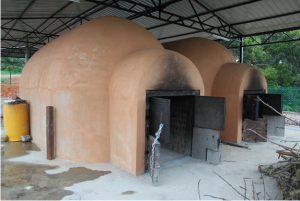 Closed Dome Carbonisation System |
b. The Continuous Carbonisation System
- Located at MPOB-UKM Research Station, Bangi Lama, Selangor;
- The continuous system was built to improve the overall process from the previous closed dome carbonisation system;
- Capable of carbonising continuously up to 2 tonnes of oil palm biomass per day;
- Capable of producing 100 kg/day charcoal or 33 tonnes/year which is based on an 8 hour working day;
- Uses a burner to ignite and heat for 2 hours until it reaches the optimum set temperature and then the heater stops, and the oil palm biomass will start self-burning (exothermic process) throughout the process;
- This reactor can stand up to temperatures of more than 700°C.
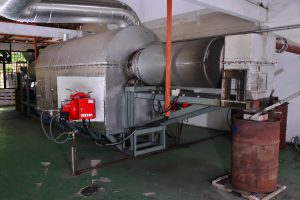 Continuous Carbonization System |
c. Carbonisation Activation System (Two-in-One System)
- A double insulated carbonisation-activation reactor was developed in order to produce activated carbon with high yield and surface area;
- The reactor is a rectangular stainless steel chamber heated by combustion of diesel using a burner;
- The reactor is equipped with a steam generator to produce steam at 170°C during activation process;
- The double insulated reactor of the carbonisation-activation system was made using alkaline-resistant low cement castable with organic fibre and enclosed with a stainless steel plate of 10mm thickness that could provide a maximum service temperature of up to 1400°C.
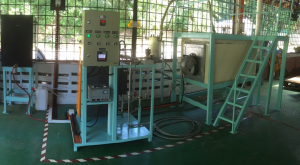 Two-in-One Carbonisation and Activation System |
2. Product Testing and Analytical Laboratories
We provide analytical services by different instruments that are mostly related to identifying the characteristics of oil palm biomass. The instruments providing services are as below:
a. Scanning Electron Microscope (SEM) with EDX Hitachi S-3400N
The Hitachi S-3400N SEM is a high performance, user-friendly scanning electron microscope with new improvements that allow the best results for a wide range of applications.
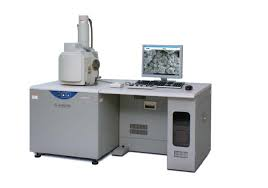 |
b. Fourier Transformed Infrared Spectrometer (FTIR)(Frontier)
Fourier Transform Infrared Spectroscopy (FTIR) is an analytical technique used to identify organic (and in some cases inorganic) materials, including polymer compounds. This technique measures the absorption of various infrared light wavelengths by the material of interest.
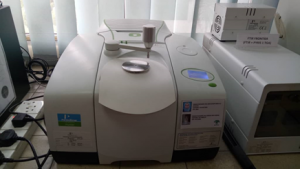 |
c. Thermal Gravimetric Analyzer (TGA)(Pyris 6)
The Pyris 6 TGA Thermogravimetric Analyzer from PerkinElmer is an easy-to-use system for quality assurance/quality control (QA/QC) and educational applications. The analyser provides many features that enhance ease of operation, productivity and reliability.
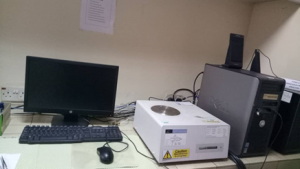 |
d. Viscometer (Viscosity Measurement)
A viscometer is an instrument used to measure the viscosity of a fluid. Viscometers only measure under one flow condition.
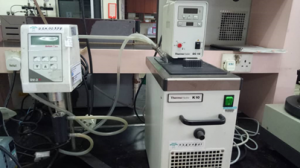 |
e. UV-Vis Spectrometer
Ultraviolet–Visible Spectroscopy or Ultraviolet-Visible Spectrophotometry (UV–Vis or UV/Vis) refers to absorption spectroscopy or reflectance spectroscopy in part of the ultraviolet and the full, adjacent visible spectral regions. UV/Vis spectroscopy is used in analytical chemistry for the quantitative determination of different analytes, such as transition metal ions, highly conjugated organic compounds and biological macromolecules.
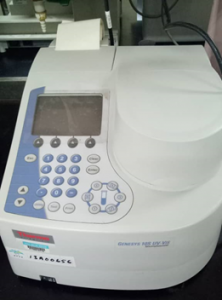 |
f. BET Surface Area Analyzer
BET analysis provides precise specific surface area evaluation of materials by nitrogen adsorption measured as a function of relative pressure. This service is offered at Stesen Penyelidikan MPOB-UKM, Bangi Lama.
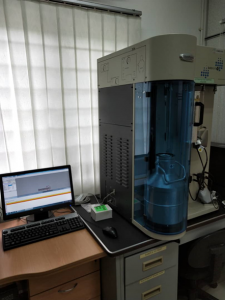 |
Biomass Processing Technology Group
1. Material Processing Plant
The research centre in MPOB/UKM is equipped with biomass material processing plants such as the EFB fibre processing plant, oil palm trunk processing plant or sawmill, the oil palm chipper, pelletizing machine and other fibre-processing machines. These material processing plants, besides being used for in-house research, are also used by universities, research institutes and industries requiring such facilities. The woodchipper in the MDF pilot plant can be used for chipping various types of materials such as EFB, OPT, OPF, kenaf and rubberwood.
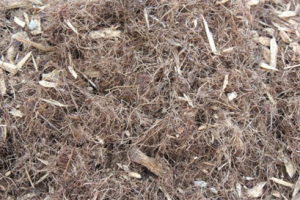 | 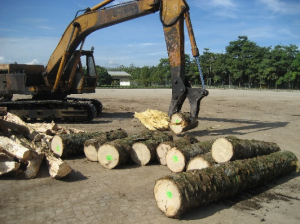 |
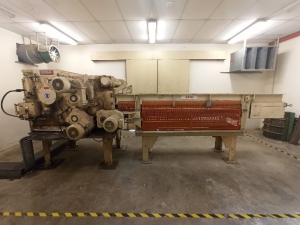 |
2. R&D Pilot Plants
The MDF pilot plant is equipped with the latest technology, which consists of a pressurized refiner, a glue doser, a tube dryer, a former and a pressing system. The pressurized refiner is equipped with a 30 cm diameter refiner disc, powered by a motor with variable speeds that can reach up to 5000 rpm. The refiner system is designed to have a steam pressure up to 10 bars. Production capacity is between 20 and 100 kg/h, depending on process conditions, the type of material and the type of refiner plate used. The resin can be injected through the blow-line resin injection system which gives better glue penetration, resulting in higher strength of the board. A multi-variable setting hot press equipped with an automatic control system is used to produce multi wood-based panels. The platen size is 600 mm x 600 mm and temperature of the platen can be set up to 220 degrees Celcius. The press has a programmable pressing cycle.
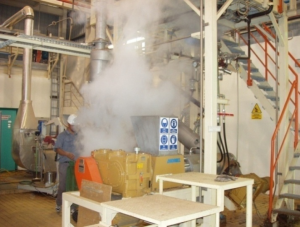 |  |
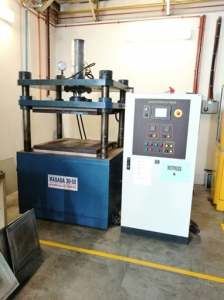 | 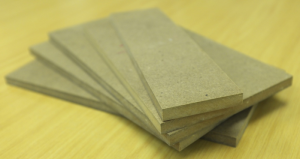 |

